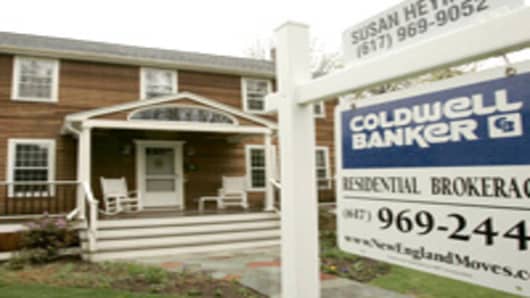I don't envy the folks over at Treasury and HUD who, month after month, are forced to report lackluster statistics on the Administration's mortgage bailout and find something positive to say about them. Unfortunately they painted themselves into a corner by inventing a "Housing Scorecard" this summer, which only forces them to report more troubling numbers.
So today (Friday), they released the report on July's numbers, including the mortgage bailout status, and, as per usual, began their reporter conference call with a pep talk on housing. Dr. Raphael Bostic, an assistant secretary at HUD, cited three reasons that we should feel good about housing.
1. "More stability in terms of prices than we've seen before the Administration initiatives were started" and "improving expectations offering some hope that we are moving to a more positive environment."
2. Historically low interest rates that "will be an important incentive and tool for people to access housing and home ownership in a very affordable way."
3. A lot of things the Administration has done outside of the mortgage bailout "have touched a significantly larger number of people than the number of people who have gone into foreclosure."
Numbers 2 and 3 are fair enough, but I, and another reporter on the call who got to ask the question first, took issue with Number 1. Yes, home prices are not in freefall, as they were before the current administration took office, but I'm not sure where they're seeing "improving expectations." All I'm seeing are reports of double dips in home sales and prices, and increasing concern that the struggling job market will push more borrowers into foreclosure.
When asked about that, Dr. Bostic replied only to the first part, about prices being better now than two or three years ago. He declined to answer the question: Where exactly are you seeing data that things are improving now?
Administration officials seem to want to point to all the other programs and incentives out there that have and are stabilizing the housing market. It's not just HAMP (Home Affordable Modification Program), they argue, but the FHA, the Hope Now industry program, the home buyer tax credits, and the government-induced low interest rates that are saving housing, they claim.
Still, the reason everyone focuses on HAMP and criticizes its results is that HAMP is the direct bailout that we the taxpayers are paying for. And it's only getting bigger with new short-sale and principal writedown programs coming this fall. It's just possible that we feel we're not getting what we're paying for, or, even worse, we see that those who are getting what we're paying for either still can't make it work or simply don't deserve it.
When pushed on the poor housing outlook, Dr. Bostic, whom I always considered to be quite the straight shooter in his previous life as an academic and economist, admitted, "I'm not suggesting we are in happy land, where everything is rosy and positive." He concedes that there are "rough patches" out there, and that they are being "ever vigilant" to try to improve the situation.
CNBC Slideshow:
Questions? Comments? RealtyCheck@cnbc.com



